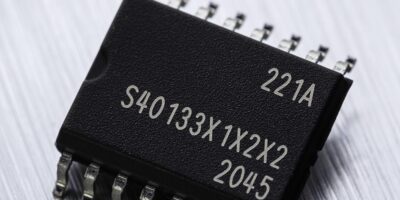Isolated current sensors lower automotive design complexity, claims Melexis
Monolithic isolated current sensors from Melexis are claimed to increase performance and lower design complexity. They are the second generation of isolated integrated current sensors from the company. The MLX91220 is a 5.0V and the MLX91221 is 3.3V Hall-effect based current sensors. They are qualified for use in automotive and industrial applications, such as on-board chargers, DC/DC converters, power supplies, and small electric drives. With 300kHz bandwidth, they suit a variety of power conversion applications lower than 50A RMS.
The MLX91220 and MLX91221 builds on the first generation of current sensors, which integrated sensing elements and high accuracy signal conditioning with voltage isolation. The new generation current sensors are available in miniature SOIC8 narrow body and SOIC16 wide body packages. According to Melexis they increase the bandwidth to 300kHz, for a response time of just two microseconds. This response time supports higher switching frequencies and more accurate tracking in control loops.
The MLX91220 also improves the dual on-chip over-current detection (OCD) function, which enables essential monitoring mechanisms using both an internal and an external feature. The internal OCD threshold can be selected in or out-of-range, with a response time of two microseconds. The external OCD threshold can be set, through an external reference voltage, within or close to the output operating range, with a typical response time of 10 microseconds, reports Melexis. Both the MLX91220 and MLX91221 can be used in one application, to offer redundancy or detect separate short circuit and out-of-scope conditions.
The MLX91220 and MLX91221 offer output mode flexibility defined at Melexis factory trimming. Automotive applications typically prefer ratiometric analogue output voltages, whereas industrial applications often rely on fixed sensitivity built around a reference voltage. The output mode is factory trimmed and selectable with intuitive product ordering codes.
Unlike most current sensors, the MLX91220 and MLX91221 does not rely on ferromagnetic concentrators. It uses an internal differential sensing concept to detect the magnetic field that is generated by the integrated primary conductor. This differential concept also provides a high level of stray field immunity, enabling higher density power electronics, meaning that the sensor is less affected by stray magnetic fields in close proximity.
The SOIC8 package is rated to 2.4kV RMS isolation as per IEC/UL-62368, and the SOIC16 wide body package doubles this to 4.8kV rated isolation. The SOIC16 package also offers a lower primary conductor resistance, because it has a higher pin count and increased conductor thickness. Both the MLX91220 and MLX91221 have low resistivity, the SOIC16 scores 0.75 mOhm and the SOIC8 measures 0.85 mOhm – which is significantly lower than shunt-based solutions, says Melexis.
Samples and a development kit are available now.




